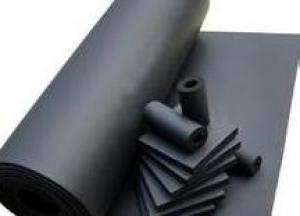Class 1 Flexible Duct: A Journey Through Standards and Expectations
From the moment we take our first breath, we’re surrounded by air. It’s invisible, yet vital. The quality of the air we breathe can significantly impact our health and well-being. This is where Class 1 Flexible Duct comes into play, a crucial component in the HVAC systems that ensure the air in our homes and workplaces is clean and safe. Let’s dive into the world of Class 1 Flexible Duct, exploring its standards, expectations, and the journey it takes from concept to reality.
The Heart of the HVAC System
Class 1 Flexible Duct is the lifeline of an HVAC system. It’s designed to transport air throughout a building, ensuring that every corner is filled with fresh, clean air. But what makes this duct different from others? It’s all about the standards it adheres to. These ducts are made to meet the highest quality and safety standards, ensuring that they perform their job efficiently and effectively.
A Breath of Fresh Air: The Importance of Standards
The standards for Class 1 Flexible Duct are not just a set of rules; they’re a commitment to quality. These ducts undergo rigorous testing to ensure they can handle the demands of an HVAC system. From withstanding high temperatures to resisting corrosion, these ducts are built to last. The standards also ensure that the ducts are easy to install and maintain, making them a practical choice for any building.
The Path to Perfection: Manufacturing Expectations
The manufacturing process of Class 1 Flexible Duct is a testament to the power of precision and innovation. Each step, from the selection of materials to the final inspection, is carefully monitored to meet the high expectations set for these ducts. The materials used are chosen for their durability and resistance to wear and tear, ensuring that the ducts can withstand the test of time.
The Art of Flexibility: Design and Function
One of the most striking features of Class 1 Flexible Duct is its flexibility. This design element allows the ducts to navigate through tight spaces and complex building structures with ease. The flexibility doesn’t compromise the duct’s integrity; in fact, it enhances it. The ducts are designed to maintain their shape and structure, even when subjected to the pressures of an HVAC system.
Safety First: Compliance and Testing
Safety is at the forefront of the Class 1 Flexible Duct’s design. The ducts are tested for various safety aspects, including flame resistance and toxicity levels. These tests ensure that the ducts not only perform their function but also contribute to a safe and healthy environment. Compliance with safety standards is a must, and manufacturers take this responsibility seriously, ensuring that every duct meets the required safety benchmarks.
The Human Touch: Installers and Maintenance
The people behind the installation and maintenance of Class 1 Flexible Duct play a crucial role in the system’s success. Installers are trained to handle these ducts with care, ensuring that they are installed correctly and efficiently. Maintenance crews are knowledgeable about the intricacies of these ducts, keeping them in top condition and ready to serve for years to come.
The Future of Air: Innovation and Sustainability
As we look to the future, the role of Class 1 Flexible Duct in HVAC systems is only set to grow. With a focus on innovation and sustainability, manufacturers are constantly looking for ways to improve the ducts’ performance and reduce their environmental impact. From using recycled materials to developing energy-efficient designs, the future of Class 1 Flexible Duct is bright and promising.
In Conclusion
Class 1 Flexible Duct is more than just a component in an HVAC system; it’s a symbol of our commitment to quality, safety, and innovation. As we continue to push the boundaries of what’s possible, these ducts will play a central role in shaping the air we breathe for generations to come. So, the next time you take a deep breath, remember the unsung hero working tirelessly behind the scenes – the Class 1 Flexible Duct.

